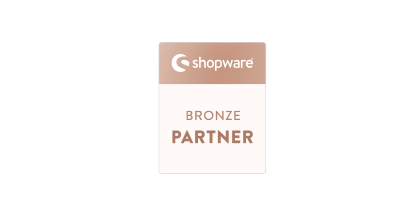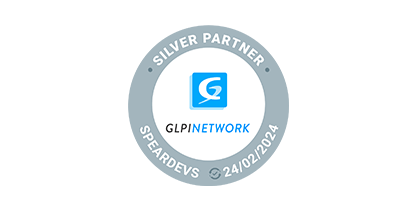You’ve probably come across the acronym CI/CD – or at least heard it mentioned. Continuous Integration (CI), Continuous Delivery (CD), and Continuous Deployment (coincidentally also CD which can be confusing) have become essential elements of the software development lifecycle.
This article will explore what CI and CD (both delivery and deployment) are, their origins, and best practices for effectively utilizing these processes.
Let’s start with the basics: What is CI/CD?
Continuous Integration (CI) is a practice rooted in Agile programming principles and earlier in Extreme Programming (XP). It involves developers frequently integrating their code changes into the main branch of a project – sometimes several times a day.
Think of it like building a house with a solid blueprint. Without this regular merging, you’d end up with endless conflicts, delays, and a project that’s tough to manage.
CI helps us catch bugs early, leading to more stable and reliable code.
Continuous Delivery (CD) is a process where every code change that passes all tests is ready to be deployed to production, but the deployment itself is initiated manually. In short, CD means that software is always in a “production-ready” state.
Continuous Deployment is an approach where every change that passes all automated tests is deployed straight to the production environment. No need for manual intervention. Continuous Deployment is a logical extension of Continuous Delivery.
From waterfall to DevOps: A journey of continuous evolution
Looking back, software deployment processes used to be complex and error-prone. In the early days of software development, deployments were often characterized by a chaotic and unpredictable process. Teams worked in isolation, merging code only at the end of a development cycle. This often led to serious conflicts, integration issues, and delays in releasing new features.
One common issue is the “wall of confusion,” a term used to describe the situation where code changes become so intertwined and complex that modifying them was a real challenge.
Continuous Integration (CI) for the rise
In the 1990s, agile methodologies like Scrum introduced new ways to work. Teams began integrating code more frequently, and this shift brought about the concept of Continuous Integration (CI). CI encouraged developers to merge their code into the main branch regularly. As a result, it helped catch conflicts early and made bug-fixing easier.
A well-known challenge of CI is the “Friday afternoon dilemma”. It is when developers often hesitate to commit code late in the week, fearing they might break the build and leave their team in a difficult spot on Monday.
Continuous Delivery (CD) to reduce risk in production
Even with CI, production deployments remained tough. Deployments often relied on manual processes, from configuring servers to copying files and running scripts. Operations teams found themselves stretched thin, managing stability while handling deployment tasks.
To address this, Continuous Delivery (CD) emerged, ensuring that each code change, once tested, was always ready for deployment. This approach reduced deployment risks and allowed for faster, more controlled releases.
Continuous Deployment to automate the entire cycle
As teams aimed for faster, hands-off deployments, Continuous Deployment became a natural evolution from Continuous Delivery.
While CD ensures software is always ready for production, Continuous Deployment goes further by fully automating the process, pushing updates live as soon as they pass automated tests. This allows features to reach users almost instantly.
💡It’s important to distinguish between deployment and release.
- Deployment refers to the process of moving software to a production environment.
- Release involves making the deployed software available to users.
Canary releases and staged rollouts
In a Continuous Deployment model, every change that passes automated tests is automatically deployed to production, but the release may be delayed or staged.
To manage risks, many organizations use strategies like canary releases. In a canary release, only a small group of users gets access to the new version initially. This allows teams to monitor performance and catch issues before rolling it out to everyone.
Best practices for CI/CD processes
Thanks to the continuous development of ways to accelerate software development, over the years, specialists have developed a number of best practices that are essential for maximizing the efficiency of CI/CD processes.
Small, frequent commits
Making large code changes can be a headache when it comes to integration, testing, and deployment. That’s why it’s best to commit changes frequently but in smaller chunks.
This becomes a “healthy habit” that helps prevent code conflicts and makes it easier to diagnose any issues. A developer working on a new feature should commit their changes every few hours, rather than waiting several days. This way, if one of those changes introduces a bug, it will be quickly noticed and fixed.
Automated testing
Automated testing is essential for CI/CD to work effectively. Before any change is merged and deployed, it must pass a full suite of tests, including unit, integration, and functional tests.
Automated testing involves using specialized tools to execute tests repeatedly and automatically. This approach ensures that new code changes do not introduce unintended side effects or regressions.
While manual testing can be effective for initial verification, it becomes impractical and inefficient as software projects grow in complexity and size. Unit and integration tests should be run after every commit to ensure no part of the system has been accidentally damaged.
Version control
Maintaining consistent software versions across different environments (dev, staging, production) is a good idea.
Using a suitable version control tool like Git is key, and ensuring that changes pass through each environment in a controlled and orderly manner is vital. Changes first go to the development environment, where they’re tested by developers. Then, after approval, they move to the stage, where they’re tested in a production-like environment. Only after successful verification can they be deployed to production.
Keep the single source of truth
Remember, the code in the repository is the “single source of truth,” and all changes should be pushed to the repository and deployed from it. Manually copying files directly to the server or injecting artifacts from outside the repository into pipelines is strongly not recommended.
Database versioning
Changes in the code often require changes in the database. It’s important to ensure that these changes are also managed in a controlled manner. Tools like Liquibase or Flyway allow you to version and migrate databases simultaneously with application updates. When a new version of the application is deployed, the system automatically updates the database structure according to the changes.
Maintaining a “green line”
A “green line” refers to a state where the application code always works correctly on the main branch of the repository. If something causes an error, further deployments should be immediately halted until the issue is resolved. If tests fail on one of the branches in the version control system, all further work on new features is halted until the problem is fixed.
Deployment automation
Deployment automation shortens the time between code integration and production deployment. The pipeline should be optimized and include steps like building, testing, and final deployment. Automation of rollbacks is also crucial in case something goes wrong.
Popular CI/CD tools like Jenkins, GitLab CI/CD, GitHub Actions, and CircleCI can manage these processes and halt deployments if tests fail.
Monitoring and rapid response
Monitoring deployed software in real-time allows teams to react swiftly to issues. Set up alerts, performance monitoring, and logs to detect problems early. Prometheus and Datadog are popular tools that help DevOps or SRE teams keep tabs on application performance. If performance suddenly drops, an alert is sent to the responsible team, who immediately begins analyzing and fixing the problem.
Quick feedback loops allow for safe, small-batch development and faster resolutions. By quickly identifying and addressing issues, teams can minimize the risk of introducing defects into the production environment.
Additional resources for a CI/CD deep dive
For a deep dive into CI/CD practice, you may want to look at these useful courses, books and articles:
- Automation Maestro
- Accelerate by Nicole Forsgren, Jez Humble, and Gene Kim
- GitLab CI/CD Best Practices
- Codefresh’s CI/CD Best Practices
Conclusion
In summary, following CI/CD best practices is crucial for successful software development. By making small, frequent changes and automating tests, teams can catch issues early and reduce risks.
A consistent deployment process, along with real-time monitoring, helps ensure that software remains stable and performs well. Together, these practices create a smoother development pipeline, allowing teams to deliver value to users quickly and efficiently.























